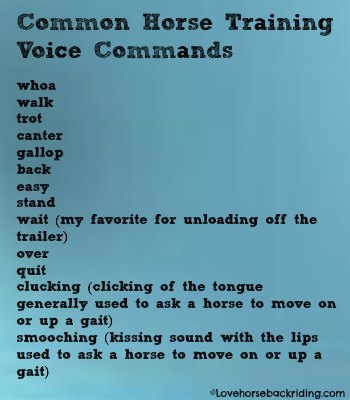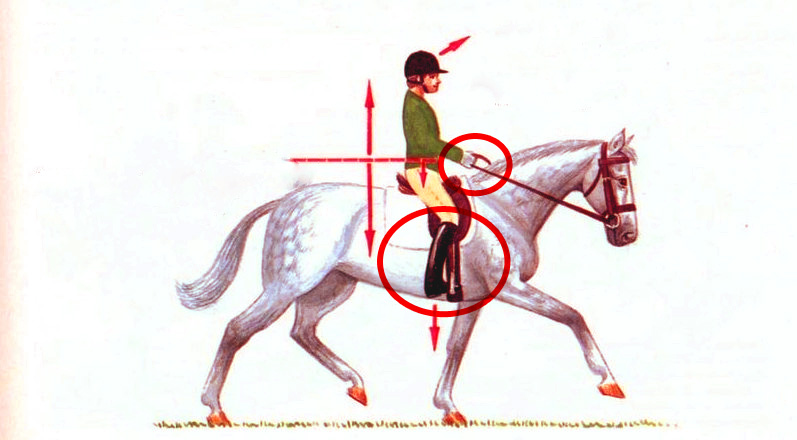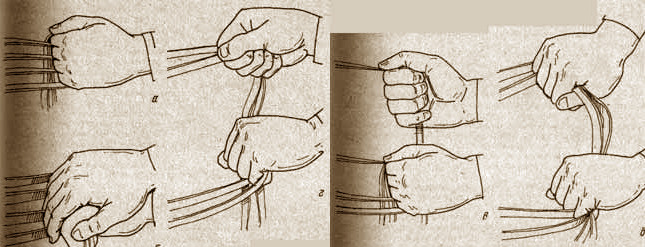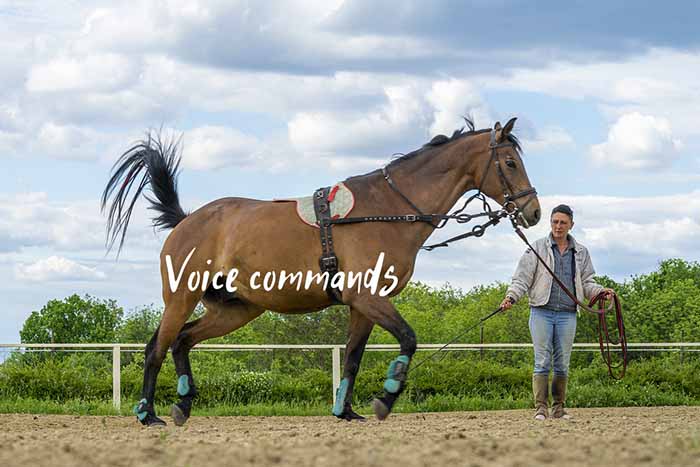Have you ever wondered how to teach your horse verbal commands for riding? It’s a valuable skill to have in your equestrian toolkit, as it allows you to communicate with your horse more effectively while on the saddle. In this article, we’ll dive into the topic of teaching your horse verbal commands, giving you some tips and techniques to try out. So, if you’re interested in improving your communication with your equine partner, keep reading!
One of the first things to consider when teaching your horse verbal commands is consistency. Just like humans, horses learn best when they have a clear understanding of what is expected of them. So, choose a set of keywords or phrases that you want to use as your commands, and stick to them. For example, you might choose “walk on” to mean go forward, “halt” to mean stop, and so on. By using the same words each time, you’ll help your horse associate the command with the desired action.
In addition to consistency, it’s important to use clear and precise body language when giving verbal commands. Horses are incredibly perceptive to our physical cues, so make sure your body is aligned with the command you’re giving. For example, when asking your horse to turn left, subtly shift your weight to the left and use a clear verbal command such as “left.” This combination of verbal and physical cues will reinforce the command and help your horse understand what you’re asking of them.
These are just a few tips to get you started on the journey of teaching your horse verbal commands for riding. In the full article on our website, “http://horsebackridingdude.com”, you’ll find more detailed information and techniques to help you refine your communication skills with your equine partner. So, stay tuned and happy riding! Teaching Your Horse Verbal Commands for Riding

Introduction
Horseback riding is an incredible experience that allows riders to connect with these majestic creatures in a unique and exhilarating way. However, effective communication between horse and rider is essential for a safe and enjoyable riding experience. While physical cues such as leg aids and rein commands are commonly used, verbal commands can also play a crucial role in establishing clear and precise communication. In this article, we will explore the importance of teaching your horse verbal commands, how to choose appropriate commands, and the steps to effectively train and reinforce these commands. We will also discuss troubleshooting common challenges, expanding the repertoire of commands, safety tips, and the benefits of verbal commands for both the rider and the horse.
Understanding Verbal Commands
Importance of verbal commands in horseback riding
Verbal commands have long been utilized as a means of communication between humans and animals. In horseback riding, teaching your horse verbal commands can enhance communication not only during riding sessions but also during groundwork and day-to-day interactions. By incorporating verbal cues into your training, you can establish a clear line of communication that strengthens the bond and partnership between you and your horse.
How horses communicate with each other through verbal cues
Horses are social animals that rely on both vocal and non-verbal cues to communicate with each other. In their natural herd environment, horses use a variety of sounds to convey messages such as warning signals, invitations to play, or claims to territory. By understanding and replicating these natural vocal cues, riders can establish a more effective means of communication with their horses.
Benefits of teaching your horse verbal commands
Implementing verbal commands in your horse’s training regime offers numerous advantages. Firstly, verbal commands provide an additional layer of communication that can be used in conjunction with physical cues. Secondly, they allow you to guide your horse from a distance or in situations where physical cues may not be possible or appropriate. Lastly, teaching your horse verbal commands enhances their mental stimulation and improves their overall responsiveness, leading to a safer and more enjoyable riding experience.

Choosing Appropriate Verbal Commands
Selecting words that are easy for your horse to distinguish
When choosing verbal commands for your horse, it is important to select words that are distinct and easily distinguishable from each other. Horses have a keen ability to distinguish different tones and inflections in our voices, so utilizing words that have distinct sounds and rhythms will help your horse understand your cues more effectively. For example, avoiding similar sounding words like “trot” and “hot” can prevent confusion and potential miscommunication.
Avoiding confusing or conflicting commands
Consistency is key when teaching your horse verbal commands. Avoid using multiple words to convey the same command, as this can lead to confusion and delay in response. Similarly, it is important to avoid using the same word for different commands, as this can create conflicting signals for your horse. By maintaining clarity and consistency in your verbal commands, you can ensure that your horse understands and responds appropriately.
Using consistent voice tone and volume
In addition to the words you choose, the tone and volume of your voice play a crucial role in conveying your intentions to your horse. Consistency in voice tone and volume is necessary to prevent misunderstandings. By using a calm and assertive tone, you can convey confidence and establish authority without intimidating or confusing your horse. It is also important to remember that horses have sensitive hearing, so speaking softly may require them to strain to hear, while shouting may prompt fear or anxiety.
Teaching Basic Verbal Commands
Starting with simple commands like ‘walk’ and ‘stop’
Before delving into more complex commands, it is essential to establish a solid foundation with basic verbal commands. Start with simple commands such as ‘walk’ and ‘stop’. Begin by associating the verbal cue with the corresponding action during groundwork sessions. For example, say ‘walk’ while simultaneously applying a light pressure on your horse’s sides to encourage forward movement. Over time, your horse will begin to associate the verbal command with the desired action.
Utilizing positive reinforcement and rewards
Positive reinforcement is a highly effective method for teaching verbal commands. Reward your horse with praise, pats, or treats immediately after they respond correctly to a verbal command. This positive association reinforces the desired behavior and motivates your horse to understand and respond to future commands. However, it is important to use rewards in moderation to avoid overindulging or spoiling your horse.
Progressing to more complex commands like ‘trot’ and ‘canter’
Once your horse has grasped the basic commands, you can gradually introduce more complex cues such as ‘trot’ and ‘canter’. Begin by combining the verbal command with the corresponding physical cue, such as a gentle squeeze with your legs or a shift in your body position. Repeat the command and maintain consistency in both the word and the associated physical cue until your horse confidently responds to the verbal command alone.

Reinforcing Verbal Commands through Repetition
The importance of consistent practice sessions
To solidify your horse’s understanding of verbal commands, consistent practice sessions are essential. Regularly dedicate time to reinforce the commands, ensuring that your horse remains responsive and attentive. These practice sessions should be short and focused, minimizing distractions and allowing for ample repetition of each command.
Creating a routine for command reinforcement
Establishing a routine for command reinforcement helps your horse develop a sense of predictability and clarity. Incorporate verbal commands into every aspect of your daily interactions, from feeding and grooming to groundwork and riding sessions. By consistently reinforcing the commands within a structured routine, you are actively promoting your horse’s understanding and retention.
Gradually reducing physical cues while relying on verbal commands
As your horse becomes more proficient in responding to verbal commands, gradually reduce the reliance on physical cues. Begin by decreasing the intensity of the physical cue while maintaining the verbal command. Eventually, your horse should respond solely to the verbal command. However, it is important to remember that some horses may need occasional reminders through mild physical cues, especially in new or challenging situations.
Implementing Verbal Commands during Riding Sessions
Integrating verbal cues with leg aids and rein commands
During riding sessions, verbal commands can be seamlessly integrated with leg aids and rein commands. For example, when asking your horse to transition from a walk to a trot, you can combine the verbal command ‘trot’ with a gentle squeeze of your legs and a release of rein pressure to guide them into the desired gait. This combination of cues reinforces the clear communication and facilitates a smooth transition.
Timing and coordination of verbal commands with riding movements
The timing and coordination of verbal commands are crucial for effective communication during riding sessions. Speak the command clearly and distinctly just before, or at the exact moment, you want your horse to respond. Keep in mind that your horse needs time to process and execute the command, so allow for a slight delay between the command and the desired action. This coordination ensures that your horse understands and executes the command accurately.
Correcting and reinforcing verbal commands during riding
Correcting and reinforcing verbal commands during riding is an ongoing process. If your horse fails to respond to a command, calmly repeat it with clarity and assertiveness. Provide a reminder through a gentle physical cue if necessary. Offer praise and rewards when your horse responds correctly to reinforce the desired behavior. By consistently correcting and reinforcing verbal commands, your horse will continue to improve their understanding and responsiveness.

Troubleshooting Common Challenges
Dealing with horse’s confusion or resistance
It is common for horses to experience confusion or resistance when learning verbal commands. If your horse seems confused or resistant, assess whether your verbal cues are clear and consistent. Go back to basic commands, breaking them down into smaller, more manageable steps if necessary. Maintain patience and consistency, and provide reassurance and positive reinforcement to alleviate any potential stress or confusion.
Modifying commands for horses with different training backgrounds
Horses with different training backgrounds may respond differently to verbal commands. If your horse has previous training experience that conflicts with your chosen commands, it may be necessary to modify or retrain certain cues. Seek guidance from a professional trainer or instructor who can help you adapt the commands to align with your horse’s existing training while maintaining clarity and consistency.
Overcoming difficulties in understanding or responding to verbal cues
Some horses may experience difficulties in understanding or responding to verbal cues. In such cases, it is important to be patient and persistent in your training efforts. Break down complex commands into smaller, more easily comprehensible steps. Provide clear and consistent cues, and consider incorporating visual aids or body language to reinforce the verbal commands. Working with a knowledgeable professional can also provide valuable insight and guidance in overcoming these difficulties.
Expanding the Repertoire of Verbal Commands
Teaching advanced commands for lateral movements
Once your horse has mastered the basic commands, you can begin introducing more advanced cues for lateral movements. Commands such as ‘leg yield’ or ‘sidepass’ can be taught using a combination of verbal, rein, and leg cues. Ensure that you establish clear and consistent commands for each movement, allowing your horse to understand and execute the cues confidently.
Introducing verbal commands for jumps and obstacles
Verbal commands can be invaluable when navigating jumps and obstacles. Teaching your horse to respond to commands such as ‘jump’ or ‘over’ helps them understand the intended action and prepares them for successful navigation. Begin by incorporating the verbal command alongside the physical cues used during training over ground poles or small obstacles. Over time, your horse will associate the verbal command with the act of jumping or navigating obstacles.
Using verbal cues to refine transitions and speed changes
Verbal commands are useful tools for refining transitions and speed changes. Commands such as ‘slow’ or ‘steady’ can be utilized to regulate pace, while words like ‘extend’ or ‘collect’ can assist in refining gait transitions. By incorporating these verbal cues into your riding, you can fine-tune your horse’s responsiveness and create a more polished and synchronized ride.

Safety Tips for Training Verbal Commands
Wearing appropriate safety gear during training sessions
Safety should always be a top priority during horse training. When working on verbal commands, it is important to wear appropriate safety gear, including a well-fitted helmet and sturdy boots. These protective measures minimize the risk of injury in case of unexpected incidents or accidents during training sessions.
Seeking professional help if encountering difficulties or safety concerns
If you encounter difficulties or safety concerns while teaching your horse verbal commands, do not hesitate to seek professional help. Consulting with an experienced trainer or instructor can offer valuable guidance and ensure that you and your horse progress safely and effectively. They can assess your training techniques, make necessary adjustments, and provide additional support when needed.
Being aware of the horse’s physical and mental limitations
Every horse has physical and mental limitations that need to be taken into consideration during training. It is crucial to be aware of these limitations and adjust your training methods accordingly. Be mindful of your horse’s stamina, fitness level, and any previous injuries or health concerns. Tailor your training sessions to suit your horse’s individual needs and avoid overexertion or unnecessary strain.
Maintaining and Refreshing Verbal Commands
Regularly practicing and reinforcing learned commands
To maintain and reinforce learned verbal commands, regular practice is essential. Dedicate time during each riding session to incorporate verbal cues, ensuring that your horse remains sharp and responsive to your commands. Consistency and repetition are key to retaining and solidifying your horse’s understanding of verbal cues.
Refreshing commands after prolonged breaks
If you and your horse have taken a prolonged break from training, it is important to refresh the verbal commands. Begin with a review of the basic commands and gradually reintroduce more complex cues. Assess your horse’s responsiveness and adjust the training intensity accordingly, gradually building back up to their previous level of proficiency.
Monitoring and addressing any command fading or inconsistency
Over time, it is common for verbal commands to fade or become inconsistent. Monitor your horse’s response to each command and address any signs of fading or inconsistency immediately. Reinforce the commands through additional training or seek professional help to troubleshoot potential issues. By addressing these concerns promptly, you can maintain a high level of communication and precision with your horse.
Benefits of Verbal Commands for Riders
Improved communication and harmony with the horse
Teaching your horse verbal commands improves communication and establishes a greater sense of harmony between rider and horse. Through this enhanced communication, riders can convey their intentions more effectively and receive responses with greater clarity. This improved partnership and understanding create a more enjoyable and connected riding experience.
Enhanced precision and responsiveness during riding
Verbal commands contribute to enhanced precision and responsiveness during riding. The ability to cue your horse with a simple word or sound allows for quick and precise adjustments, resulting in more refined movements and transitions. This increased responsiveness also translates to improved performance, especially in competitions or challenging riding situations.
Strengthened bond and partnership between horse and rider
The process of teaching your horse verbal commands fosters a strengthened bond and partnership between horse and rider. Through consistent training and clear communication, trust and understanding develop on both sides. This bond strengthens the rider’s confidence and the horse’s willingness to perform, ultimately creating a deeper connection and a more enjoyable riding experience for both.
Conclusion
Teaching your horse verbal commands is a rewarding and beneficial endeavor for both you and your equine partner. By understanding the importance of verbal communication, choosing appropriate commands, and diligently training and reinforcing these cues, you can establish a clear line of communication with your horse. Verbal commands, in conjunction with physical cues, refine and enhance communication during riding, allowing for greater precision, responsiveness, and harmony between horse and rider. By embracing verbal commands, you not only improve your riding abilities but also strengthen the bond with your horse, fostering a partnership built on understanding and trust. So, grab your horse, start training, and enjoy the remarkable experience of riding through effective communication.